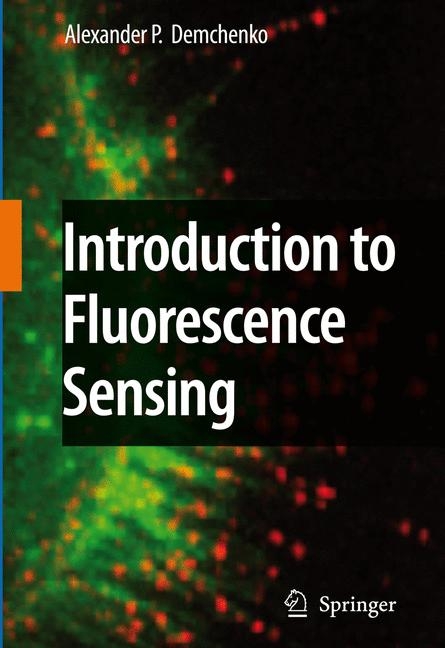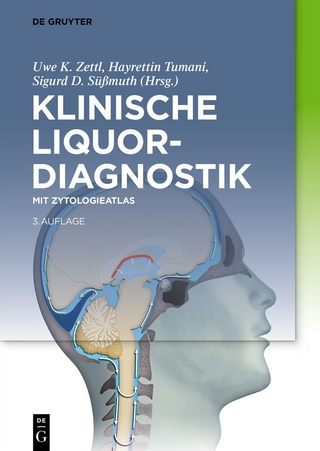
Introduction to Fluorescence Sensing
Springer (Verlag)
978-90-481-8049-3 (ISBN)
- Keine Verlagsinformationen verfügbar
- Artikel merken
Fluorescence sensing is a rapidly developing field of research and technology. Its target is nearly the whole world of natural and synthetic compounds being detected in different media including living bodies. The application area range from control of industrial processes to environment monitoring and clinical diagnostics. Among different detection methods fluorescence techniques are distinguished by ultimate sensitivity, high temporal and spatial resolution and versatility that allows not only remote detection of different targets but their imaging within the living cells. The basic mechanism of sensing is the transmission of the signal produced by molecular interaction with the target to fluorescent molecules, nanoparticles and nanocomposites with the detection by devices based on modern electronics and optics. In this interdisciplinary field of research and development the book is primarily intended to be a guide for students and young researchers. It is also addressed to professionals involved in active research and product development serving as a reference for the recent achievements.
The users of these products will find description of principles that could allow proper selection of sensors for particular needs. Making a strong link between education, research and product development, this book discusses future directions.
Introduction Chapter 1. Basic principles 1.1. Overview of strategies in molecular sensing 1.2. Labeled targets in fluorescence assays 1.3. Competitor displacement assays 1.4. Sandwich assays 1.5. Catalytic biosensors 1.6. Direct reagent-independent sensing Sensing and thinking 1: How to make the best sensor? Comparison of basic principles Chapter 2. Theoretical aspects 2.1. Parameters that need to be optimized in every sensor 2.2. Determination of binding constants 2.3. Modeling the ligand binding isotherm 2.4. Kinetics of target binding 2.5. Formats for fluorescence detection Sensing and thinking 2: How to provide the quantitative measure of target binding? Chapter 3. Fluorescence detection techniques 3.1. Intensity-based sensing 3.2. Anisotropy-based sensing and polarization assays 3.3. Lifetime-based fluorescence response 3.4. Excimer and exciplex formation 3.5. Forster resonance energy transfer (FRET) 3.6. Wavelength-shift sensing 3.7. Two-band wavelength-ratiometric sensing with a single dye Sensing and thinking 3: The choice of fluorescence detection technique and optimization of response Chapter 4. Design and properties of fluorescence reporters 4.1. Organic dyes 4.2. Luminescent metal complexes 4.3. Dye-doped nanoparticles and dendrimers 4.4. Semiconductor Quantum Dots and other nanocrystals 4.5. Noble metal nanoparticles and molecular clusters 4.6. Fluorescent conjugated polymers 4.7. Visible fluorescent proteins Sensing and thinking 4: Which reporter to choose for particular needs? Chapter 5. Recognition units 5.1. Recognition units built from small molecules 5.2. Antibodies and their recombinant fragments 5.3. Ligand-binding proteins and protein-based display scaffolds 5.4. Designed and randomly synthesized peptides 5.5. Nucleic acid aptamers 5.6. Peptide nucleic acids 5.7. Molecularly imprintedpolymers Sensing and thinking 5: Selecting the tools for optimal target recognition Chapter 6. Mechanisms of signal transduction 6.1. Basic photophysical signal transduction mechanisms 6.2. Signal transduction via energy transfer 6.3. Signal transduction via conformational changes 6.4. Signal transduction via association and aggregation phenomena 6.5. Integration of molecular and digital worlds Sensing and thinking 6: Coupling recognition and reporting functionalities Chapter 7. Supramolecular structures and interfaces for sensing 7.1. Building blocks for supramolecular sensors 7.2. Self-assembled supramolecular systems 7.3. Conjugation, labeling and cross-linking 7.4. Supporting and transducing surfaces 7.5. Functional lipid bilayers Sensing and thinking 7: Extended possibilities with smart nano-ensembles Chapter 8. Non-conventional generation and transformation of response 8.1. Chemiluminescence and electrochemiluminescence 8.2. Bioluminescence 8.3. Two-photon excitation, up-conversion and stimulated emission 8.4. Direct generation of electrical response signal 8.5. Evanescent-wave fluorescence sensors 8.6. Plasmonic enhancement of emission response Sensing and thinking 8: Eliminating light sources and detectors: what remains? Chapter 9. The sensing devices 9.1. Instrumentation for fluorescence spectroscopy 9.2. Planar waveguides and surface-sensitive detection 9.3. Microfluidic devices 9.4. Multi-analyte sensor chips and microarrays 9.5. Devices incorporating whole living cells Sensing and thinking 9: Optimizing convenience, sensitivity and precision for obtaining the proper sensor response Chapter 10. Focusing on targets 10.1. Temperature, pressure and gas sensing 10.2. Probing the properties of condensed matter 10.3. Detection of small molecules and ions 10.4. Nucleic acid detection and sequence identification 10.5. Recognition of pr
| Erscheint lt. Verlag | 19.10.2010 |
|---|---|
| Zusatzinfo | biography |
| Verlagsort | Dordrecht |
| Sprache | englisch |
| Maße | 156 x 234 mm |
| Gewicht | 918 g |
| Themenwelt | Medizin / Pharmazie ► Medizinische Fachgebiete ► Laboratoriumsmedizin |
| Medizin / Pharmazie ► Studium | |
| Naturwissenschaften ► Chemie ► Analytische Chemie | |
| Naturwissenschaften ► Physik / Astronomie ► Angewandte Physik | |
| Technik | |
| ISBN-10 | 90-481-8049-X / 904818049X |
| ISBN-13 | 978-90-481-8049-3 / 9789048180493 |
| Zustand | Neuware |
| Haben Sie eine Frage zum Produkt? |
aus dem Bereich


